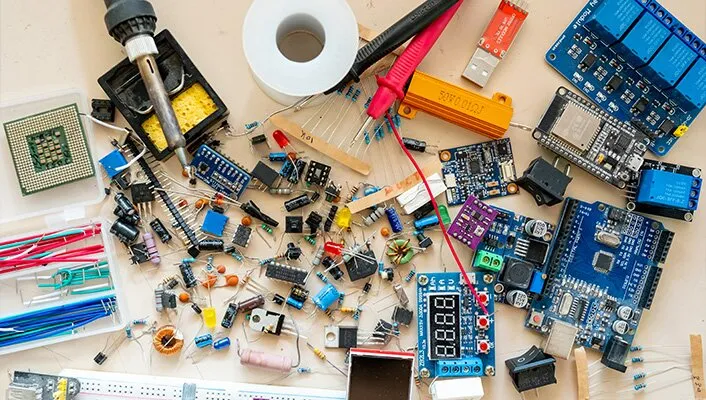Sourcing electronic components can often become a complex and challenging task, especially when parts are discontinued or available in limited quantities. However, with effective strategies and proactive approaches, these challenges can be addressed. Here, we explore the key hurdles in electronic component procurement and offer practical solutions to overcome them.
1. Supply Chain Management
Efficient supply chain management is essential for streamlining the procurement process and mitigating risks.
Solutions:
- Monitor Supply Chains: Continuously track processes to identify bottlenecks or disruptions.
- Build Strong Supplier Relationships: Collaborate with trusted suppliers to ensure reliable delivery and support.
- Demand Forecasting: Use data-driven insights to predict future needs and plan ahead.
- Continuous Improvement: Regularly evaluate and optimize supply chain processes to enhance efficiency and reduce delays.
2. Inventory Management
Effective inventory management ensures that components are available when needed while avoiding overstock or shortages.
Solutions:
- Demand Planning: Use historical data and project requirements to accurately forecast component needs.
- Inventory Tracking: Implement inventory management systems to monitor stock levels in real time.
- Inventory Rotation: Regularly rotate stock to prevent obsolescence and ensure components are in optimal condition.
- Just-in-Time (JIT) Strategies: Reduce holding costs by ordering components to arrive just as they’re needed.
3. Exploring Alternative Components
When certain components are discontinued or hard to source, alternatives can provide a viable solution.
Solutions:
- Identify Substitutes: Research components with similar specifications and functionality that can replace the original part.
- Test Compatibility: Conduct thorough testing to ensure the alternative meets performance and reliability standards.
- Engage Experts: Consult with engineers and suppliers to find the best alternatives for your project.
4. Partnering with Reliable Suppliers
Working with dependable suppliers is a cornerstone of successful component procurement.
Solutions:
- Evaluate Suppliers: Assess suppliers based on quality, delivery reliability, customer support, and industry reputation.
- Diversify Sources: Avoid over-reliance on a single supplier by partnering with multiple vendors to reduce risks.
- Long-Term Partnerships: Build strong, long-term relationships to secure better terms, priority access, and reliable support.
5. Access to Current Information
Staying informed about market trends, production updates, and supply chain disruptions is critical.
Solutions:
- Follow Industry News: Regularly review manufacturer announcements, supplier platforms, and industry publications.
- Engage in Forums: Participate in online forums and communities to gain insights into sourcing challenges and solutions.
- Leverage Technology: Use tools and platforms that provide real-time updates on component availability and market trends.
6. Good Planning and Communication
Proactive planning and clear communication are essential to navigating the procurement process successfully.
Solutions:
- Define Project Needs Early: Clearly outline component requirements and timelines to avoid delays.
- Timely Procurement: Start the sourcing process well in advance to accommodate lead times and potential delays.
- Maintain Open Communication: Collaborate closely with suppliers to address issues quickly and ensure smooth transactions.
Why These Strategies Matter
Implementing these solutions offers several benefits:
- Timely Component Delivery: Reduces the risk of project delays caused by supply chain disruptions.
- Cost Optimization: Minimizes excess inventory and prevents the high costs of sourcing obsolete components.
- Improved Quality: Ensures access to reliable and high-quality components, enhancing system performance and customer satisfaction.
Final Thoughts
The procurement of electronic components is a dynamic process that requires flexibility, strategic planning, and proactive management. By focusing on supply chain efficiency, inventory management, reliable suppliers, and alternative solutions, businesses can navigate challenges effectively and achieve project success.
Stay tuned for more insights and tips on optimizing your electronic component procurement process. With the right strategies in place, you can ensure seamless operations and consistent access to the components you need.
